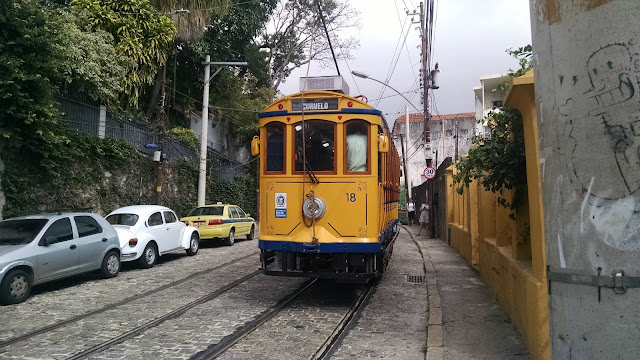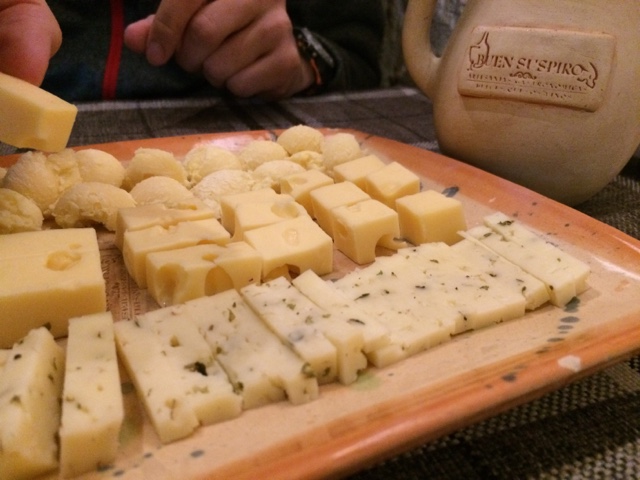Rio de Janeiro is one of the world's great cities. It's hot and gritty and mountainous and green and rich and poor and full of life and music. It's impossible to do everything in one visit, so we settled for hitting some highlights and soaking up the atmosphere.
Ipanema and Copacabana beaches: kilometers of smooth white sand surrounded by dramatic tall mountains and buildings. Deservedly famous in song. We saw the bar where "Girl from Ipanema" was written, and the fashion boutique next door run by the Girl herself. They may be cashing in on the fame, but the beaches are legit. I'm still finding sand in my shoes.
Christ Redeemer: one of the new 7 Wonders of the World. Impressive but too crowded. Great views of the city: we got to see it in night mode.
Carnival: not Carnival season, but we did see the barren expanse of the 700m-long Sambodrome where the main event is held each year.
Fútbol: Brazil's national passion. We went to see local team Vasco da Gama play Palmeiras from São Paulo. Not in the famous Maracanã stadium, but still impressive. The game went comically bad for the home team, to the point that the fans were booing their own players. Tough love. Vasco at least managed to score a point in the second half so it ended a less embarrassing 1-4. No riots, and unlike Argentina they serve beer in the stadium! Non-alcoholic beer.
We stayed in the Santa Teresa neighborhood, on a hillside with great views (great views are everywhere in Rio), perched over a historic aqueduct and a lively nightlife district. Santa Teresa is home to the Escadaria Selarón, a famous tiled stairway that is the life's work of an obsessed artist. He has tiles from all over the world and is constantly replacing parts of the stairway. (Correction: Priscilla corrected me that Selarón was found dead on these steps in 2013, possibly murdered)
Our last day in Rio was great timing: the Santa Teresa trolley service was finally restarted after several years of repairs. We accidentally found the initial celebratory free rides, so we hopped on board and rode downtown across the aforementioned aqueduct.
When we're in a big city, we try to track down showings of new movies that are subtitled in the local language instead of dubbed. Rio didn't disappoint, and we saw "Inside Out". We keep forgetting the title because down here it's advertised as " Intensa Mente" and "Divertisa Mente". Great movie!
We didn't do any poverty tourism or visit favelas. Yes, the taxis at the bus terminal tried to rip us off when we arrived since there was a taxi strike (protesting Uber!) but that's not too surprising (we took the bus instead). You want to be careful when you walk around at night, but in general Rio is less scary than it's reputation.
Working our way towards São Paulo now; we'll be in India in less than a week!
-Peter






















































